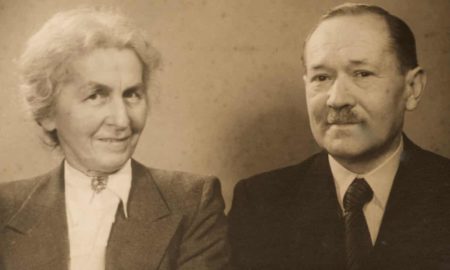To all our friends in the United Kingdom and The Commonwealth, Sandy and I would like to express our sadness over the passing of your Queen. She was a great lady and left quite a legacy. The best words we can use to describe her are “strength” and “dignity.” We don’t know anyone in America who would say otherwise.
For those of you who read our recent blog, Blonde Poison (click here to read the blog), you may remember the last image I inserted. It was a picture of a group of men known as the “Ritchie Boys.” One of the men was an author I profiled in the recommended reading section of the blog. Well, one of our readers contacted me with some interesting comments regarding the Ritchie Boys and I thought, “This might make a good blog topic.” So, here you have it.
Did You Know?
Did you know that not all German citizens supported Hitler and the Nazis? While they were in the vast minority, many of them became active resisters. A Berlin couple, Max and Malwine Schindler (1890−1948 and 1887−1973, respectively and no relation to Oscar Schindler), formed an underground network in Berlin disguised as an English-language tutoring service. The purpose of the network was to get Jewish families and political dissidents out of Nazi Germany. The amazing part of the story is that it wasn’t discovered until 2019 when letters and photographs were found in a gardening shed in Australia. Under the cover as English language tutors and coaches, Max and other members visited Jewish families in their apartments. They established ties to liberal British organizations that could provide people to guarantee financial support to the refugees thus allowing the Jews and others to escape to England. These activities occurred during the 1930s as well as after the Nazis began to forcibly remove Jews from Berlin beginning in 1941. At that point, it was impossible to send people to England, so the Schindlers began to hide Jews in their large apartment at Pariser Straße 54.
Despite the testimonies of seven people after the war, the anti-Nazi activities of the Schindlers’ and others like them were quickly forgotten. It was only when the daughter of a former conversation coach who worked with the Schindlers found the cache of letters that documented Max and Malwine’s efforts.
Malwine is buried in an unmarked grave in the Wilmersdorf cemetery while Max’s final resting place is unknown. These are clearly two people who should have been recognized by Vad Yashem as “The Righteous Among the Nations.”

Camp Ritchie
Somewhere nestled in the Blue Ridge mountains in Maryland is the former army post known as Fort Ritchie. Closed in 1998, the post once held German and Italian POWs between 1942 and 1945. However, it is now widely recognized as the top-secret location for the Military Intelligence Training Center (MITC) that was activated on 19 June 1942. The mission of the MITC was to train servicemen in espionage, counterintelligence, and frontline interrogation. It became America’s first centralized school for intelligence and psychological warfare. The MITC was nicknamed “Camp Ritchie” and almost twenty thousand men were recruited and trained at Camp Ritchie during the three years of its wartime existence. (About two hundred women were recruited.) They became known as the “Ritchie Boys.” Read More The Ritchie Boys
